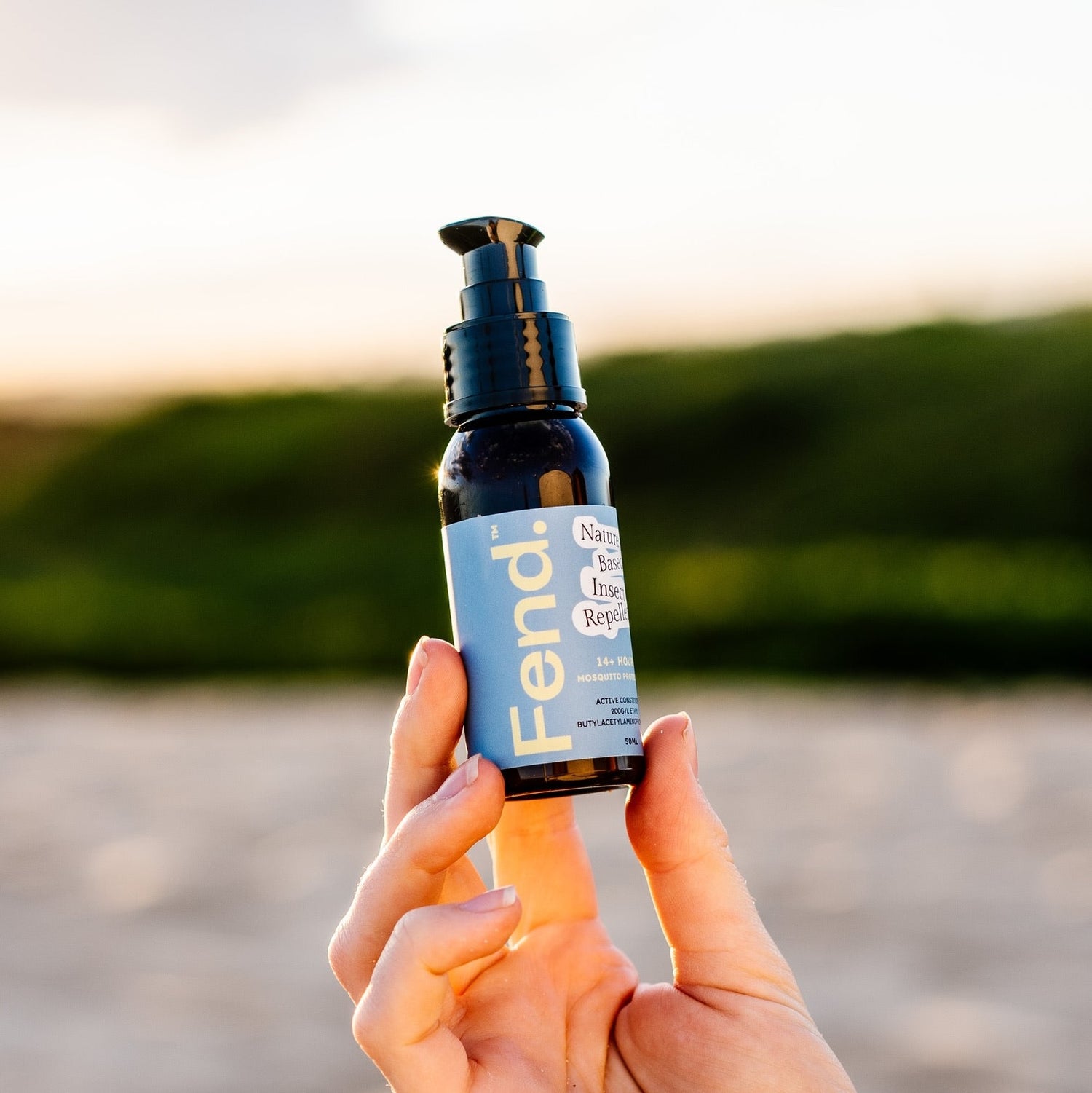
Australia's longest-lasting DEET-free repellent.
14 hours insect protection in a non-oily, baby-friendly and hypoallergenic lotion.
APVMA APPROVAL NUMBER 91808/133517
Let customers speak for us
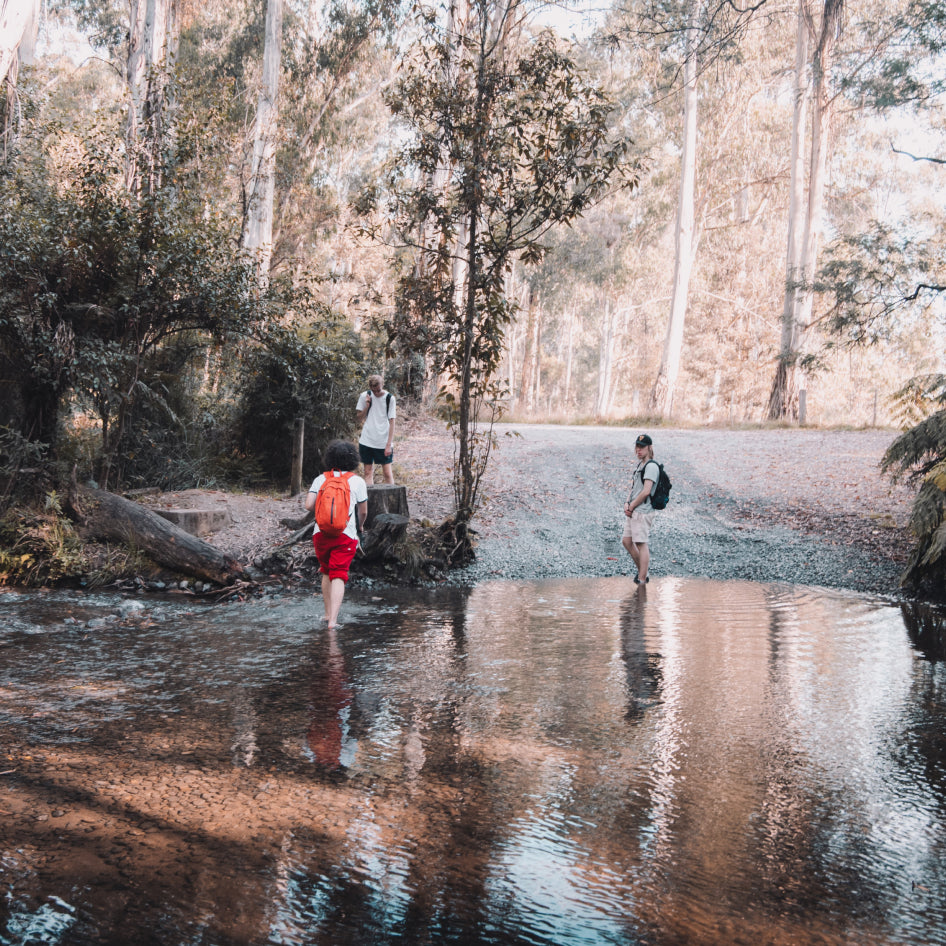
14-hour protection.
Clinically proven across 4 species of disease-carrying mosquitoes, Fend® is the longest-lasting DEET-free repellent available. Apply once for protection all day or all night.
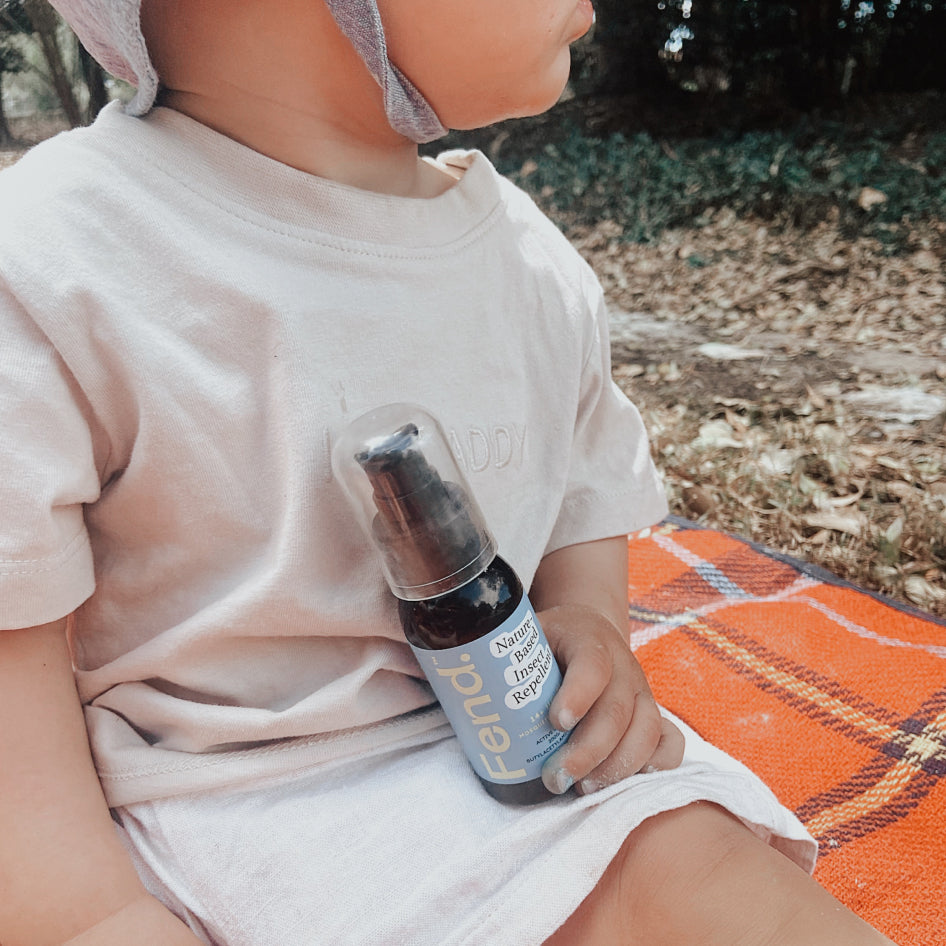
Family-friendly.
Fend® is kind to even the most delicate skin.
It is suitable for babies 2 months+, and for pregnant or breastfeeding mothers.

Pleasant to use.
Fend® goes on like a moisturiser and won't leave your skin feeling oily or sticky.
It's hypoallergenic with no overpowering or lingering smell.

How it works.
Rather than harsh chemical pesticides, Fend® uses an active ingredient called IR3535® (ethyl butylacetylaminopropionate), a gentle amino acid derivative.
It works by confusing insects' sensory receptors, disrupting their ability to detect carbon dioxide and therefore their ability to find and bite their host.
IR3535® is considered a safer and more environmentally friendly alternative to DEET.
See it in action.
-
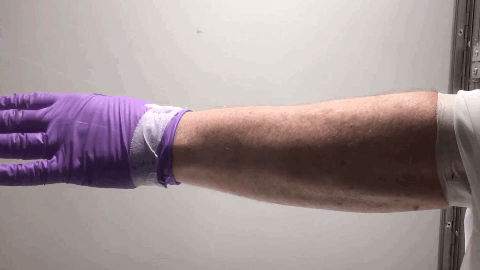
Protected by Fend.
40 brave trial participants stuck their arm in a cage with 55 hungry mosquitoes. With Fend®, the earliest bites occurred after 13 hours.
-
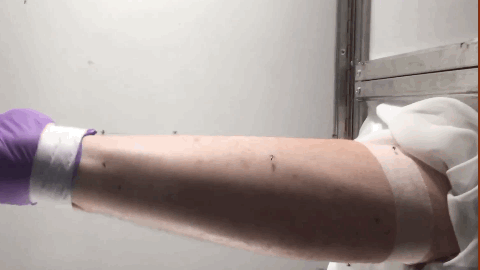
Not protected by Fend.
The unprotected arms were attacked within seconds.
Clinical studies
Inspired by nature. Backed by science.
Arm-in cage study: AEDES AEGYPTI
PARTICIPANTS: 10 participants - 4 women, 6 men - aged 18-60.
SPECIES: 55 female mosquitoes aged 5-10 days of species Aedes Aegypti.
RESULTS: 0 stings were recorded by 14 hours. Stings were recorded on 4 of the 10 participants at 15 hours.
CONCLUSION: Considered satisfactory for repellent action to mosquito species Aedes Aegypti during a period of 14 hours after application.
Arm-in cage study: AEDES ALBOPICTUS
PARTICIPANTS: 10 participants - 5 women, 5 men - aged 18-60.
SPECIES: 55 female mosquitoes aged 5-10 days of species Aedes Albopictus.
RESULTS: 0 stings were recorded by 13 hours. Stings were recorded on 3 of the 10 participants at 14 hours.
CONCLUSION: Considered satisfactory for repellent action to mosquito species Aedes Albopictus during a period of 13 hours after application.
Arm-in cage study: CULEX QUINQUEFASCIATUS
PARTICIPANTS: 10 participants - 5 women, 5 men - aged 18-60.
SPECIES: 55 female mosquitoes aged 5-10 days of species Culex Quinquefasciatus.
RESULTS: 0 stings were recorded by 14 hours. Stings were recorded on 3 of the 10 participants at 15 hours.
CONCLUSION: Considered satisfactory for repellent action to mosquito species Culex Quinquefasciatus during a period of 14 hours after application.
Arm-in cage study: ANOPHELES AQUASALIS
PARTICIPANTS: 10 participants - 6 women, 4 men - aged 18-60.
SPECIES: 55 female mosquitoes aged 5-10 days of species Anopheles Aquasalis.
RESULTS: 0 stings were recorded by 13 hours. Stings were recorded on 4 of the 10 participants at 14 hours.
CONCLUSION: Considered satisfactory for repellent action to mosquito species Anopheles Aquasalis during a period of 13 hours after application.
Dermal Irritability
OBJECTIVE: To evaluate the potential of adverse skin reactions caused by topical use.
PARTICIPANTS: 54 participants - 43 women, 11 men - aged 19-63.
METHODOLOGY: The repellent was applied to hypoallergenic adhesive strips. Strips were applies to the same location on participants 3 times per week for 3 weeks.
RESULTS: No side effects (erythema, edema, papule or vesicle) were detected in the area of application, and no participants reported sensations of discomfort during the study.
CONCLUSION: A primary irritation index of 0.0 out of a possible 8.0 at is sufficient to classify the repellent as 'Toxicity Category IV - Very Low Toxicity'.
Photosensitisation
OBJECTIVE: To evaluate the potential of adverse skin reactions caused by exposure to UV light following topical use.
PARTICIPANTS: 35 participants - 28 women, 7 men - aged 18-63.
METHODOLOGY: The repellent was applied to hypoallergenic adhesive strips. Strips were applied to participants for 24 hours. When removed, the test area was immediately exposed to 4 J/cm2 UVA light to test for discomfort or clinical reactions. Tests were repeated on the same area 3 times per week for 2 weeks.
RESULTS: No side effects (erythema, edema, papule or vesicle) were detected in the area of application.
CONCLUSION: The product did not cause photosensitisation and was not shown to be phototoxic and support the 'hypoallergenic' appeal.








